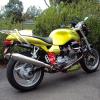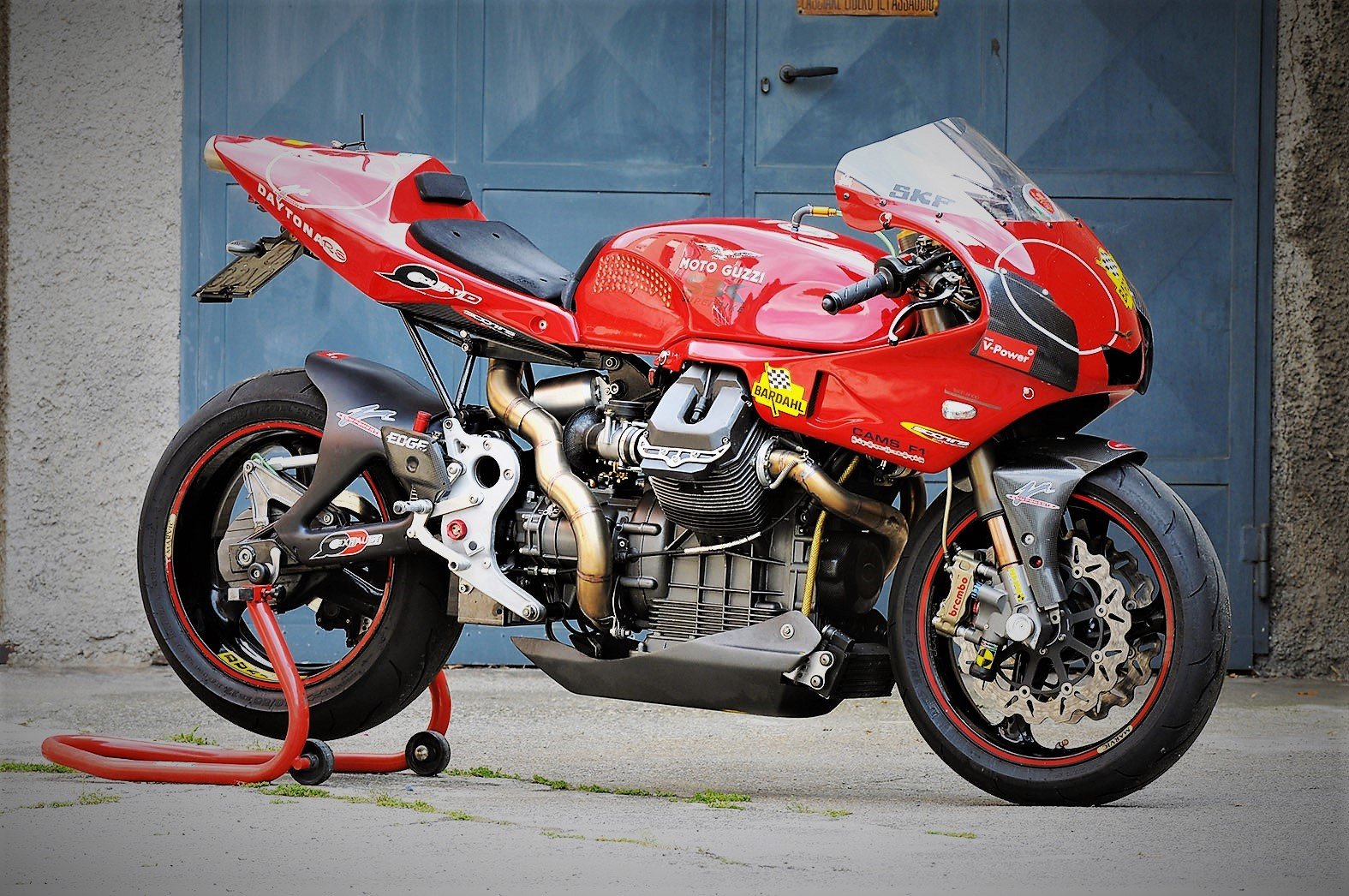-
Posts
5,449 -
Joined
-
Last visited
-
Days Won
276
Content Type
Profiles
Forums
Events
Gallery
Community Map
Everything posted by Lucky Phil
-
My previous post should have read "silly enough to pay $2000 to service the 916". That's just overcharging, shop around. I've been working on 4 valve Desmo systems since the mid 1980's since they were first released first the 851,888,916,996 and 1098 which are all the same basic engine design,although the 1098 is easier valve clearance wise, so I guess thats only 34 years.As well as the bevel drive and 2 valve belt desmos before that. Part of my 996 experience is at WSB level and 2 valve belt Desmo's at world championship level,so I thought it might be valuable to get the perspective from someone thats actually done the work on them for the pleasure of it as apposed to the view of someone thats doing it for the profit. Plenty of people including competent home mechanics have been turned away from Ducati's because of overcharging by shops for servicing and I'm here to point out its not really valid The 916 series was a major leap forward in ease of servicing and access and is quite an easy bike to work on. Pulling the engine on a 916 to do the heads is totally unnecessary. Personally nothing I own mechanically ever crosses the dealer doorstep after purchase. After having worked side by side with mechanics from several dealerships, car and bike over the last 35 years (or so) I'd rather just do it myself and worry about the warranty issues if there are any when they arise or just absorb the cost myself. It often works out cheaper that way in the long term. Ciao
-
I suspect the early greeny forks and the later non Ohlins equipped bikes had different forks and caps. Ciao
-
I was looking at this Ciao
-
He didnt say his bike has Ohlins forks. Ciao
-
JB might be an overkill docc, even without bonding of any kind with the switch assy put back together it would operate without coming apart the spring pressures are so small. might need to be careful putting the connector on and off,time will tell I guess. Ciao
-
I machined off the crimp. I dont know how contact cleaner worked for you as I tried that as well. After I disassembled it I saw how that wouldn't work for mine as there's no way for the cleaner to get to the switch cavity. The contacts in mine were just tarnished and it needed cleaning up with wet and dry. There was no evidence of oil or contact cleaner in the switch cavity so I assume there is a seal in the plunger section. Ciao
-
Gearbox is done and now just trying to rectify the nil ops neutral switch. The switch is outrageously expensive and all it needs is the contacts cleaned up. Holding it all back together is the challenge. Loctite 635 will hopefully be the answer. Ciao
-
From the album: V10 Engine
-
What about this? https://webshop.lineamotor.hu/en/spd/YYB950QT01007/Rubber-Cushion-Strip-Muffler-Fiing-Ring ciao
-
Bargain, not sure about the guides though. I'll take another look at my spare head. Ciao
-
Well some things just seem to fight you all the way for some reason,maybe its just me. I've finally made some progress on the gearbox after a few issues along the way. I assembled the mid case with all the gear shafts onto the main housing and bolted it down all sealed and with me feeling rather good about things, that is until I tried to turn the upper secondary shaft (1st,3rd and 5th from memory) It would turn but you could feel the drag of no end clearance. With a ball bearing on the aft end and a roller on the front it was obvious there was something amiss on the roller. The thought of the 0.0035" I machined off the rear face after the weld repair to flatten out the case which was like this from the factory was on my mind as was the not correctly seated input shaft roller I found. So before the sealant had set I pulled it apart again looking for the problem. Nothing jumped out at me so I drifted the front roller bearing into its recess just to be sure. I suspected it moved a fraction because the baffle thingy behind it tightened a little but I wasn't confident. It was tight enough to warrant sorting but it would have got enough clearance when the gearbox warmed up. Anyway seating the fwd roller fixed the issue to my relief. So with the mid case bolted down and sealed it was onto fitting the input shaft and secondary shaft ring nuts. These have a surprising amount of torque 90 n/m on the main and 80 n/m on the smaller secondary shafts. I managed to get the main nut torqued up which is hard when you're holding the gearbox shaft with the tool and applying the torque but when I went onto the secondary shafts I stripped the first ring nut. No idea why. I applied some lube to the lock washer face and some loctite to the threads and used my "good" torque wrench but there you go. Anyway I gave Pete Roper a hoy as he had lent me his tooling and he kindly sent me a new nut and washers in the post.......stout chap Pete. After some research and thinking I decided to back the torque on these down a touch. 80 n/m just feels too much and considering that are the same 17x1mm thread as a Ducati 1098 cam pulley ring nut which uses 64-78 n/m I ended up going with 70 n/m and some loctite. So that all worked out and the rear cover fitted up nicely with its new seal. I have of course fitted my Chuck shift return spring to the shifter mechanism and the shift assembly has previously felt the warmth of my fettling so it was just the spring upgrade to worry about. Once again thanks to Pete Roper for the tooling and spares, I owe him a few drinks obviously. All that's really left if to fit the clutch slave,torque up the front ring nut and install the shifter cover. Not sure if I'll bolt it up to the engine unit yet or wait until fitment to the bike. So here it is at present, assembled for the most part with all titanium fasteners. Surprisingly there are a lot of fasteners that go into the wet area that aren't sealed in any way. The manual doesn't call for anything but I have applied sealant to all these fasteners. This is what you need to do to torque up the secondary shafts when you dont have any friends.The secondaries impart a rotating torque to not only the input shaft but also the gearbox case and you cant hold both and apply 70nm hence you need friends to hold the casing. So I pinned it to the bench with the input shaft holding tool against the vice and 2 8mm bolts throught the starter mount holes into holes I drilled into my old much loved bench. Don't like drilling holes in the bench but it adds to the patina I guess. T Time to start considering installation to the chassis I guess. Ciao
-
What valves did you end up going with? Do you mean this step? Image 2 http://www.mgcycle.com/index.php?main_page=product_info&cPath=68_127&products_id=423 My spare head just has a cast finish in the ports. Ciao
-

Timing Gear Set - Replacing timing chain
Lucky Phil replied to FalcoLion's topic in Technical Topics
The gears in my Centauro engine were worn (mileage unknown, but lots I suspect) enough for me to not want to re use them. Surprisingly the oil pump was in fine shape. I went with the Caruso gears again same as my 2 valver. Ciao -

Timing Gear Set - Replacing timing chain
Lucky Phil replied to FalcoLion's topic in Technical Topics
Although car/multi cylinder engines have more valve springs to drive the load on the gears is more evenly distributed and the gears generally have more real estate inside the engine which means they can also be wider. Car engines by and large also spend much of their working life at much lower rpm. My previous Chev gen111 engined car used to cruize at 1750 rpm at 110kph. The Guzzi is turning around twice those revs at the same speed. There are of course many other factors but I agree with Pete in that aluminium isnt a great choice for cam gears. I wouldnt have changed the chain for alloy gears. Ciao -

Timing Gear Set - Replacing timing chain
Lucky Phil replied to FalcoLion's topic in Technical Topics
No to the cost and no to the noise. My bike has Joe Caruso steel gears and neither of those comments apply. Ciao -
Just thinking, a "universal joint replacement" is a bong isn't it. Ciao
-
Make sure the tank is venting correctly as this will also happen if its not. Mine is usually about 3mm clearance but recently I had the tank vent hose kinked after install and it interfered. You wont believe how much the tank expands when the vent is blocked. Ciao
-
Yes the exposed shaft is standard, the alternator light should go out as soon as the engine starts, no idea what the three way toggle is as its not standard, the left front indicator mount looks damaged, the seat cowling needs some large headed chrome attachment screws and the canisters under the seat need to go. A few little items to keep you amused. I'd look into the alternator light and the three way switch first. Check the battery and alternator connections as a start to basic troubleshooting. To lock the steering on my bike you need to push on the key, release and then it will turn to the locked position while you hold the steering a little off the steering stop. If you push and hold the key down it wont turn to the lock position or if the steering is all the way on the stop it wont lock either. all my other bikes you pushed the key down and held it down to go to the locked position but not the Guzzi it appears. Also check the toggle switch isnt wired into the regulator sensing system Some people replace the std reg with a unit that bypasses the ignition switch which works fine except it drains the battery after sitting for long periods. Maybe they wired a switch in the system or an anti theft device? There's plenty of help here if you need it. Ciao
-
I'm thinking in those 2 years they probably only made 2-3000 bikes worldwide. How many were affected I dont know but it seems not all of them. Ciao
-
Or maybe a batch of cases with bad/incorrect preparation that caused the paint not to adhere. Ciao
-
Gearbox painted at last just need to oven cure the paint then assembly. Ciao



